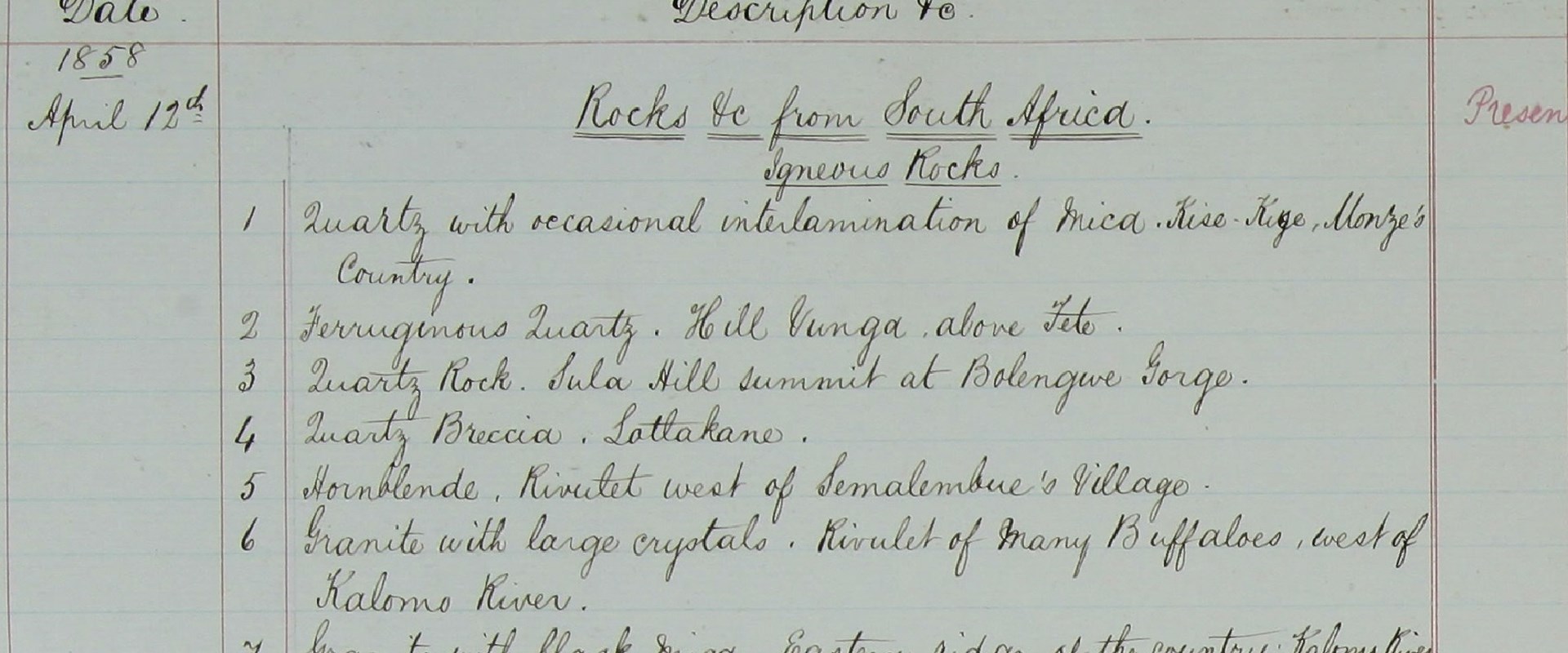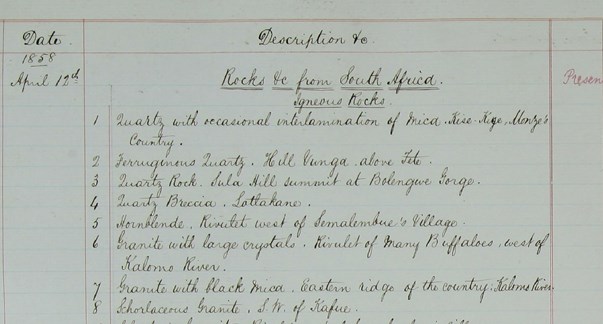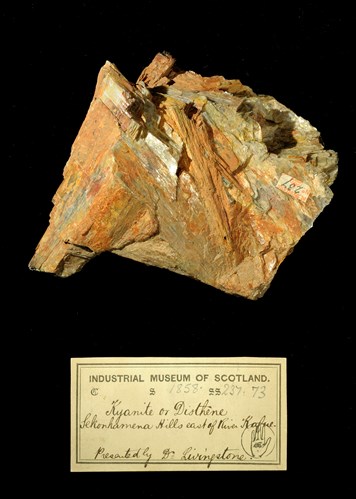Key in a search term below to search our website.
Key in a search term below to search our website.

Livingstone’s collection arrived in the museum at a time when there was a particularly intense interest in classifying the variety of the natural world.
Rock and mineral specimens can be organised in a number of ways, for example, by geographic location, date acquired, or type. From the way this collection was recorded in the Museum's register, we can infer that their economic significance was particularly important at the time they were introduced to the collection.
The classic method of sub-dividing rocks into igneous, metamorphic and sedimentary categories was used in the Museum's register, unless the specimen had a particular value as an economic resource, in which case it was given a specific category. The same is true for economic minerals, as iron ores and gold were separated from the main mineral collection. The collection was classified as follows:
These days we view the collection rather differently. These specimens in particular have a higher historic than scientific value and are now housed in the Rock Collection at National Museums Scotland Collection Centre.

Above: Detail of the Museum's register of 1857.

Above: One of the specimens from Sekankamena with the museum's label that was given to the specimen after being registered into the Industrial Museum of Scotland collection.